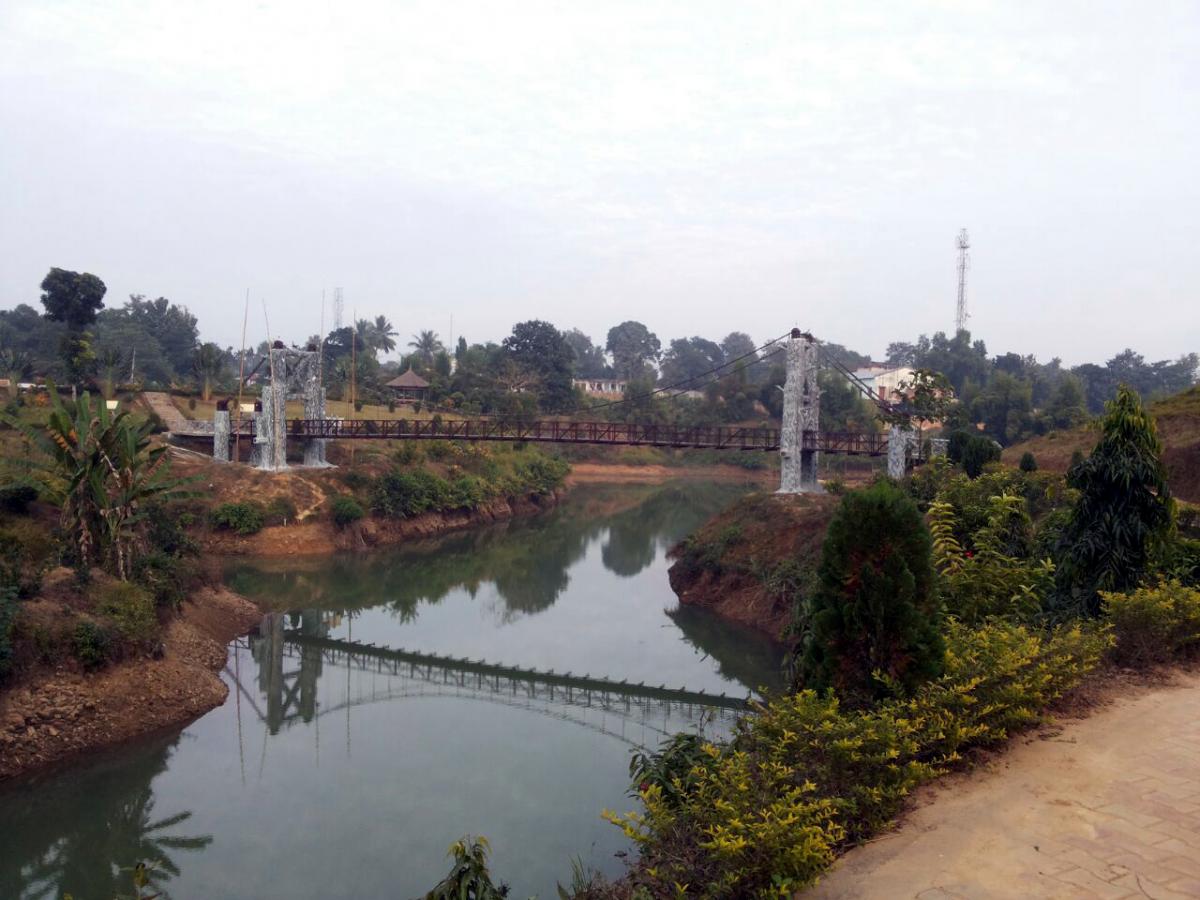Live
- Five-Year-Old Boy Dies After 55-Hour Rescue from Borewell in Rajasthan's Dausa
- Chaos in Parliament over Congress-George Soros link claims, BJP MP poses questions
- Bus Driver Arrested After Deadly Accident in Mumbai’s Kurla; 42 Injured
- Community lunch, a ritual to prevent drought in Adoni
- Rs 36.07 crore tribal products sold through TRIFED in FY24: Govt
- PM Modi to lay foundation stone for Ken-Betwa river linking project on Dec 25: MP CM
- 70 farmers trained as drone pilots in Anantapur dist
- AP Pensions: 500 Ineligible People Receive Pensions for Every 10,000
- South Korea's ruling party chief voices support for President Yoon's impeachment
- Defeat in Tirhut bypolls doesn't signify discontent among teachers: Bihar Education Minister
Just In

A war museum, hillocks, verdant valleys, lake, plants, sculptures -- this is not just a park but much more than that. Welcome to the Bharat-Bangladesh Maitri Udyan built on a 20- hectare land in Chottakhola to commemorate the 1971 Liberation War of Bangladesh.
A war museum, hillocks, verdant valleys, lake, plants, sculptures -- this is not just a park but much more than that. Welcome to the Bharat-Bangladesh Maitri Udyan built on a 20- hectare land in Chottakhola to commemorate the 1971 Liberation War of Bangladesh.
Developed by the Tripura government, the park at Chottakhola in southern Tripura -- 130 kilometres south of Agartala and just three kilometres from the India-Bangladesh border -- will also feature a large watchtower from which parts of Comilla, Feni and Noakhali districts of Bangladesh would be visible.
Sudhan Das, a legislator in the Tripura Assembly since 2003, was among those who first conceived the idea.
"We first thought of a memorial at Chottakhola when we witnessed the Vijay Diwas on December 16, 2009. Subsequently, Tripura Chief Minister Manik Sarkar discussed the matter with Bangladesh Prime Minister Sheikh Hasina when he went to Dhaka in March 2010. Then the project was undertaken," Das told IANS.
Sarkar, who played a significant role during the Bangladesh Liberation War, was invited by the Hasina government to attend the Independence and National Day celebrations in Dhaka as a special guest.
The foundation stone of the park was laid in November 2010 by the then Bangladesh Foreign Minister Dipu Moni.
"We had sent a Rs. 12-crore project to the Union government for this park, but the Centre did not respond. The Tripura government has already spent around Rs. four crore to develop the park," Das said.
According to Das, the park would be ready for visitors in another three months. Renowned artists from both Tripura and Bangladesh are part of the project with their creations -- from statues to paintings -- that will add up to the memorial's attraction.
A museum is also being set up at the park. It will showcase the arms and ammunition used in the Liberation War, rare photographs and war literature. The park will also feature 220 different species of plants.
Other highlights of the memorial include the surrounding hillocks, Trichna Wildlife Sanctuary and a 500-year-old mosque near Bangladesh's Comilla district.
The entire project is being executed by the Tripura government departments of forests, rural development, PWD, horticulture, science and technology, water resource and power.
And it has certainly made India's friends in Bangladesh happy.
"We are grateful to the Tripura government for constructing the park and the museum," said Bangladesh Liberation War Affairs Minister AKM Mozammel Haque.
"We are grateful to the Indian soldiers who fought for liberation of our country and sacrificed their lives. Our government has decided to organise events in eight places across India to honour them," the minister told IANS.
Tripura Health and PWD Minister Badal Choudhury said: "We had discussed about building a memorial several years back with the then Defence Minister Pranab Mukherjee."
Justifying the decision to build the memorial in the state, Choudhury said: "Tripura had not only accommodated the displaced people but also provided all kinds of support and help to the freedom fighters. The border town of Belonia was attacked by the Pakistani forces."
Political analyst and writer Gautam Das, who had closely watched the Liberation War, told IANS: "Over 160,000 displaced people from the then East Pakistan had taken shelter in Tripura.
"Our state had many camps in four sectors from where the freedom fighters fought the Pakistani forces in the nine-month-long war in 1971."
Those heady days are long gone. But people of Tripura understand the need to celebrate the indomitable spirit of the freedom fighters and Indian soldiers who fought shoulder to shoulder to liberate an oppressed land. The memorial will certainly ensure that it is never forgotten.

© 2024 Hyderabad Media House Limited/The Hans India. All rights reserved. Powered by hocalwire.com







